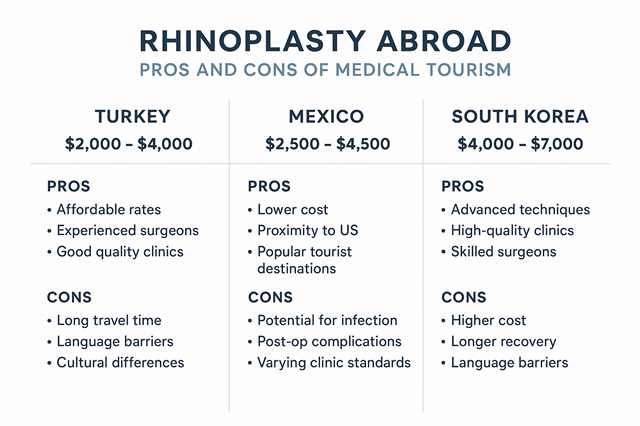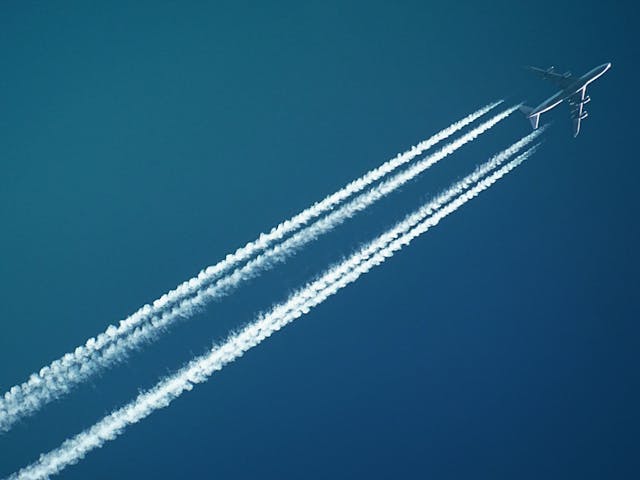Nose Surgery Abroad: What You Need to Know Before Traveling for Rhinoplasty
When Sarah received quotes from three local plastic surgeons, the numbers were staggering—$12,000, $15,000, and $18,000 for the rhinoplasty she’d been dreaming about for years. Then a colleague mentioned something interesting: she’d had her nose reshaped in Istanbul for less than a third of that cost. Like many considering nose surgery abroad, Sarah found herself weighing the appeal of significant savings against questions about safety, quality, and whether traveling internationally for cosmetic surgery made practical sense.
The concept of medical tourism for cosmetic procedures has grown remarkably over the past decade. Rhinoplasty—or nose reshaping surgery—stands out as one of the most commonly sought procedures abroad, with thousands of patients annually crossing borders for this life-changing operation.
But here’s the thing: choosing to have rhinoplasty overseas isn’t simply about finding the lowest price. It involves careful evaluation of surgeon credentials, facility standards, travel logistics, and realistic expectations about what international surgery entails.
Quick Answer: Rhinoplasty overseas can offer cost savings of 50-70% compared to Western countries, with many patients achieving excellent results from board-certified surgeons in accredited facilities. However, success depends on thorough research, choosing reputable providers, planning for adequate recovery time abroad, and understanding that follow-up care may be limited. The decision should balance financial considerations with safety, surgeon expertise, and logistical factors.
Why People Choose Rhinoplasty Overseas
The motivations for seeking nose surgery abroad extend beyond simple cost savings, though that’s certainly a major factor. In many Western countries, rhinoplasty represents a significant financial commitment—often ranging from $8,000 to $20,000 depending on complexity and geographic location.
Meanwhile, the same procedure performed by qualified surgeons in countries like Turkey, Thailand, or South Korea might cost $2,500 to $6,000. That’s not a trivial difference. For many patients, overseas rhinoplasty makes an otherwise unaffordable procedure accessible.
Nose Surgery Abroad: The Cost Factor
Lower costs abroad don’t necessarily mean lower quality—though this varies by destination and provider. Many international medical centers have invested heavily in state-of-the-art facilities and attract surgeons trained at prestigious institutions. Operating costs, staff salaries, and overhead expenses tend to be considerably lower in these countries, allowing clinics to offer competitive pricing while maintaining professional standards.
That said, extremely low prices should raise questions rather than excitement. Quality surgery requires experienced surgeons, proper anesthesia, sterile facilities, and adequate post-operative care. If a price seems too good to be true, it probably warrants deeper investigation into what’s actually included.
Access to Specialized Techniques
Some destinations have developed particular expertise in rhinoplasty. South Korean surgeons, for instance, have gained international recognition for their refined techniques in Asian rhinoplasty. Turkish surgeons often specialize in both functional and cosmetic nasal surgery, performing high volumes that contribute to their technical proficiency.
Clinicians report that high-volume practices—when combined with proper training and ethics—can lead to exceptional surgical skill. A surgeon performing several rhinoplasties weekly develops a level of technical precision that lower-volume practitioners may not achieve.
Top Destinations for Rhinoplasty Abroad
Not all countries attract medical tourists equally. Certain destinations have established themselves as hubs for cosmetic surgery, developing infrastructure specifically designed for international patients.
Turkey: The Rhinoplasty Capital
Turkey—particularly Istanbul—has emerged as perhaps the world’s leading destination for nose surgery overseas. The country performs an estimated 500,000+ cosmetic procedures annually on international patients, with rhinoplasty among the most requested.
Turkish plastic surgeons often receive training both domestically and internationally, with many holding certifications from European and American surgical boards. Major clinics offer comprehensive packages including surgery, accommodation, airport transfers, and post-operative care—all at prices typically 60-70% lower than comparable Western procedures.
Medical tourism for cosmetic procedures continues growing, with Turkey consistently ranking among the top three destinations globally.
Nose Surgery Abroad: Thailand: Combining Recovery with Travel
Thailand has long positioned itself as a medical tourism destination, with Bangkok and Phuket hosting internationally accredited hospitals that cater specifically to foreign patients. Thai medical facilities often resemble luxury hotels more than traditional hospitals—a deliberate strategy to appeal to medical tourists.
Many patients appreciate Thailand’s well-developed tourism infrastructure, making it relatively easy to combine surgery with a recuperative vacation. English proficiency among medical staff tends to be higher than in some other destinations, reducing communication barriers that can complicate medical care.
South Korea: Precision and Aesthetic Expertise
South Korea’s Gangnam district in Seoul has achieved almost mythical status in cosmetic surgery circles. The concentration of plastic surgery clinics there exceeds anywhere else globally. Korean surgeons have developed particular expertise in rhinoplasty techniques suited for Asian facial features, though they certainly treat patients of all ethnicities.
The catch? South Korea tends to be pricier than Turkey or Thailand—though still considerably less expensive than the United States or Western Europe. Patients typically pay $4,000 to $8,000 for rhinoplasty, roughly 40-60% less than comparable Western procedures.
Mexico: Proximity for North American Patients
For patients in the United States and Canada, Mexico offers the advantage of geographic proximity. Cities like Tijuana, Mexicali, and Guadalajara host accredited facilities with board-certified plastic surgeons, many of whom trained in the U.S.
The shorter travel distance means less jet lag, easier follow-up visits if needed, and lower travel costs. Rhinoplasty in Mexico typically ranges from $3,000 to $6,000, offering significant savings with minimal travel inconvenience.
Evaluating Surgeons and Facilities for Abroad Nose Surgery
This aspect is where things get interesting—and where careful research becomes absolutely critical. Not all overseas surgeons maintain the same standards, and distinguishing excellent practitioners from mediocre or problematic ones requires diligence.
Surgeon Credentials to Verify
Start with board certification. While board structures vary by country, reputable plastic surgeons should hold certification from their nation’s equivalent of a plastic surgery board. In Turkey, look for Turkish Board of Plastic Surgery certification. In Thailand, check for certification from the Royal College of Surgeons of Thailand.
Many top international surgeons also hold memberships in international organizations like the International Society of Aesthetic Plastic Surgery (ISAPS). These memberships typically require demonstrated experience, ethical practice, and ongoing education.
Don’t hesitate to ask about training. Where did the surgeon complete their medical degree? Did they complete a plastic surgery residency? Have they pursued additional fellowship training in rhinoplasty or facial plastic surgery?
Nose Surgery Abroad: Facility Accreditation Matters
The facility where your surgery takes place matters as much as the surgeon’s skill. International hospital accreditation from organizations like Joint Commission International (JCI) provides reasonable assurance that a facility meets rigorous safety and quality standards.
JCI accreditation requires hospitals to demonstrate proper infection control, medication management, patient safety protocols, and quality improvement processes. While not the only credible accreditation, it’s widely recognized and respected.
Some clinics may hold accreditation from their national health ministries or regional accrediting bodies. Research what these mean—not all accreditations carry equal weight.
Nose Surgery Abroad: Before-and-After Photos and Patient Reviews
In my practice, I’ve observed that before-and-after photo galleries reveal much about a surgeon’s aesthetic judgment and technical capability. Look for patients with similar facial features and goals to yours. Do the results look natural? Are there consistent patterns in the outcomes?
Patient reviews offer another perspective, though approach these with appropriate skepticism. Look for detailed accounts that discuss the entire experience—consultation, surgery, recovery, communication, and results. Be wary of exclusively glowing reviews with minimal detail, which may be curated or fake.
Platforms like RealSelf allow patients to share detailed experiences with specific surgeons, including overseas providers. These tend to be more authentic than testimonials on a clinic’s own website.
The Consultation Process for International Rhinoplasty
Most reputable international clinics now offer virtual consultations via video call. This initial meeting serves several important purposes beyond simply getting a quote.
A thorough consultation should involve discussing your aesthetic goals in detail. What specifically bothers you about your current nose? What changes do you hope to see? Do you have reference photos that illustrate the look you’re seeking?
The surgeon should also assess whether your goals are realistic and achievable. Honest surgeons sometimes tell patients that their expectations can’t be met, or that their desired look wouldn’t suit their facial proportions. This candor—while potentially disappointing—actually signals professionalism and ethical practice.
Questions to Ask During Consultation – Nose Surgery Abroad
Come prepared with specific questions. Here’s what you need to know:
- How many rhinoplasties do you perform annually?
- What percentage of your practice focuses on rhinoplasty?
- Do you specialize in any particular techniques or approach?
- What are the most common complications you see, and how do you handle them?
- What’s included in the quoted price—surgery, anesthesia, facility fees, medications, post-op appointments?
- How long should I plan to stay in the country for recovery and follow-up?
- What happens if complications arise after I return home?
- Do you have relationships with surgeons in my home country for follow-up care if needed?
Pay attention to how the surgeon responds. Are they patient and thorough? Do they explain things clearly? Do you feel heard and respected? These interpersonal factors matter more than many patients realize—you’re trusting this person with your appearance and safety.
Understanding the Costs and What’s Included
When clinics advertise attractive prices for rhinoplasty abroad, understanding exactly what’s included prevents unpleasant surprises.
Comprehensive packages typically include:
- Surgeon’s fees
- Anesthesiologist fees
- Operating facility costs
- Pre-operative testing and consultations
- Post-operative medications
- Follow-up appointments during your stay
- Airport transfers
- Accommodation for recovery period (sometimes)
What’s often NOT included:
- International airfare
- Extended accommodation beyond the basic recovery period
- Meals
- Companion’s expenses
- Travel insurance (essential)
- Medical tourism insurance specifically covering complications
- Costs for revision surgery if needed
That last point deserves emphasis. Rhinoplasty revision rates vary, but even excellent surgeons see 5-15% of patients require some degree of revision. If you need revision work, will the overseas surgeon perform it at no cost? If so, you’ll still pay for return travel and accommodation. Or will you need to find a local surgeon to address issues—potentially at full cost?
Hidden Costs to Consider
Beyond the obvious expenses, factor in the value of your time. Most surgeons recommend staying in the country at least 7-10 days post-surgery. Some patients stay two weeks to attend follow-up appointments and ensure everything is healing properly before flying home.
That’s time away from work, family, and normal life. For some, this extended trip abroad is part of the appeal—a chance to explore a new place while recovering. For others, it represents a significant disruption and additional stress during an already stressful time.
Preparing for Your Overseas Rhinoplasty Journey
Once you’ve selected a surgeon and booked your procedure, thoughtful preparation makes the experience smoother and safer.
Medical Preparation
Your surgeon will provide pre-operative instructions, which typically include avoiding certain medications and supplements that increase bleeding risk. Common culprits include aspirin, ibuprofen, vitamin E, fish oil, and many herbal supplements. Follow these guidelines carefully—they exist for your safety.
If you take prescription medications, discuss these with both your overseas surgeon and your regular physician. Most medications can be continued, but some may need adjustment.
Arrange for any necessary pre-operative testing in your home country if possible, bringing results with you. This might include blood work, chest x-rays, or EKG depending on your age and health status.
Travel and Logistics
Book flexible flights if possible. While most rhinoplasties proceed as planned, occasional complications or slower-than-expected healing might require extending your stay. Travel insurance that covers trip cancellation and medical emergencies is essential—though note that most policies exclude coverage for the surgery itself and planned medical care.
Consider specialized medical tourism insurance. Companies like IMG Global offer policies specifically designed for patients traveling for medical procedures, providing coverage for certain complications.
Bring a companion if at all possible. You’ll need someone to stay with you the first 24-48 hours after surgery, help with basic tasks during recovery, and provide emotional support. Some clinics require patients to have a companion and won’t proceed with surgery otherwise.
What to Pack
Beyond typical travel essentials, bring:
- Complete medical records and medication list
- Comfortable, loose clothing that doesn’t pull over your head
- Button-up shirts and pants with elastic waists
- Entertainment for downtime (books, tablet, laptop)
- Phone chargers and appropriate power adapters
- Neck pillow for the flight home (helpful for keeping head elevated)
- Copies of all relevant documents (passport, insurance, surgery details)
Recovery and Post-Operative Care Abroad
The first week after rhinoplasty demands rest and careful attention to your surgeon’s instructions. This aspect is often overlooked when people focus on the surgery itself.
Expect significant swelling and bruising, particularly around the eyes. You’ll likely have a splint on your nose for about a week. Many patients describe the first few days as uncomfortable rather than painful—there’s pressure, congestion, and the general unpleasantness of facial swelling, but severe pain is relatively uncommon with proper pain management.
Following Post-Op Instructions
Your surgeon will provide detailed recovery guidelines. These typically include:
- Keeping your head elevated, even while sleeping
- Avoiding strenuous activity, bending, or heavy lifting
- Not blowing your nose for several weeks
- Avoiding glasses that rest on the nose bridge
- Staying out of direct sunlight
- Attending all scheduled follow-up appointments
Following these instructions isn’t merely suggested—it’s critical for achieving optimal results and avoiding complications.
When to Seek Medical Attention
Most patients heal uneventfully, but knowing warning signs of potential complications is important:
- Fever above 101°F (38.3°C)
- Excessive bleeding that doesn’t stop with gentle pressure
- Severe pain not controlled by prescribed medication
- Signs of infection (increasing redness, warmth, pus, foul odor)
- Sudden swelling on one side only
- Difficulty breathing beyond expected post-surgical congestion
Contact your surgeon immediately if any of these occur. Reputable clinics provide 24/7 contact information for urgent concerns.
Potential Risks and Complications of Overseas Rhinoplasty
Let me be direct: rhinoplasty carries inherent risks regardless of where it’s performed. However, having surgery abroad introduces additional considerations that deserve honest discussion.
Medical Complications
Standard rhinoplasty risks include bleeding, infection, poor scarring, breathing difficulties, asymmetry, and dissatisfaction with aesthetic results. These occur whether surgery happens in your hometown or halfway around the world.
The difference lies in how complications are managed. If infection develops two days after surgery, you’re still abroad with access to your surgeon. But if problems emerge after you return home, arranging proper follow-up becomes more complicated.
According to research published in the journal Plastic and Reconstructive Surgery, complication rates for rhinoplasty performed by experienced, board-certified surgeons range from 4-18%, varying by procedure complexity. Location matters less than surgeon skill and patient factors.
The Challenge of Distance
Perhaps the most significant risk of overseas surgery isn’t the procedure itself—it’s the logistical complexity of managing any issues that arise after you return home.
Rhinoplasty results evolve over months. Swelling gradually subsides, scars mature, and the final shape emerges. Most patients see their surgeon multiple times during this process for assessment and minor adjustments.
When your surgeon is in another country, these follow-ups become logistically challenging and expensive. Some issues require in-person evaluation—photos only reveal so much. If revision surgery becomes necessary, you face the prospect of international travel again or finding a local surgeon willing to revise another surgeon’s work (which many decline, and those who accept typically charge full fees).
Nose Surgery Abroad: Legal Recourse Limitations
Here’s what many patients don’t realize: if something goes seriously wrong, legal options are extremely limited when dealing with overseas providers. Medical malpractice laws vary dramatically by country, and pursuing claims across international borders is prohibitively expensive and complex for most individuals.
This reality makes choosing a reputable, ethical surgeon even more critical. You’re placing significant trust in someone operating under a different legal and regulatory framework than you’re accustomed to.
Making the Decision: Is Overseas Rhinoplasty Right for You?
After weighing all these factors, how do you actually decide whether international rhinoplasty makes sense for your situation?
Start by honestly assessing your priorities and constraints. If cost is the primary barrier preventing you from having desired surgery, and you’ve thoroughly researched qualified overseas options, medical tourism may open doors otherwise closed.
But if you can afford local surgery—even if it requires saving longer or financing—the convenience of local care, easier follow-up, and simpler recourse if issues arise often justifies the higher cost.
Good Candidates for Overseas Rhinoplasty
Patients who tend to have positive experiences with overseas nose surgery typically:
- Have realistic expectations about results and the process
- Are comfortable traveling internationally and navigating unfamiliar healthcare systems
- Have conducted thorough research and chosen reputable, qualified surgeons
- Can afford not just the surgery, but the full trip including contingencies
- Have flexible schedules allowing adequate time abroad for surgery and initial recovery
- Are in good general health with no complex medical issues
- Understand and accept the limitations regarding follow-up care and potential revisions
Who Should Avoid Overseas Surgery
Conversely, overseas rhinoplasty probably isn’t appropriate if you:
- Have significant anxiety about medical procedures or travel
- Have complex medical conditions requiring specialized care coordination
- Are seeking extremely complex or revision rhinoplasty (primary procedures are generally safer for medical tourism)
- Can’t afford the trip beyond bare minimum surgery costs, leaving no cushion for unexpected expenses
- Don’t have time for adequate recovery before returning to work or responsibilities
- Strongly prefer the security of having your surgeon readily accessible long-term
Alternatives to Consider
Before committing to overseas surgery, explore whether alternatives might meet your needs.
Nose Surgery Abroad: Financing Options
Many plastic surgeons offer payment plans or work with medical financing companies. While this means paying interest, it allows you to have surgery locally with easier follow-up care. Calculate whether the total cost with financing compares unfavorably enough to overseas options to justify the additional travel and logistical complexity.
Nose Surgery Abroad: Seeking Surgeons in Training
Teaching hospitals often offer procedures performed by resident or fellow surgeons under attending physician supervision. These typically cost less than private practice surgery while maintaining rigorous safety standards. The trade-off is longer procedure times and less surgeon autonomy, but outcomes are generally excellent.
Nose Surgery Abroad: Non-Surgical Alternatives
Depending on your concerns, non-surgical nose reshaping using dermal fillers might address minor aesthetic issues at a fraction of surgical costs. While temporary (lasting 6-12 months), this option provides a risk-free way to test whether changing your nose’s appearance feels right before committing to permanent surgical alteration.
Nose Surgery Abroad: Finding Your Path Forward
The decision to pursue rhinoplasty overseas ultimately comes down to balancing financial realities against convenience, risk tolerance, and personal circumstances. There’s no universally “right” answer—what makes sense for one person may be completely wrong for another.
What remains consistent across all situations is this: thorough research, realistic expectations, and choosing qualified, ethical providers form the foundation of positive outcomes. Whether you ultimately travel abroad for your rhinoplasty or find ways to have surgery closer to home, approaching the decision thoughtfully and informed puts you in the best position for success.
Rhinoplasty—wherever it’s performed—represents more than just surgical technique. It’s about achieving results that make you feel more confident and comfortable in your own skin. That goal deserves careful consideration, thoughtful planning, and the best care you can access.














Post Comment